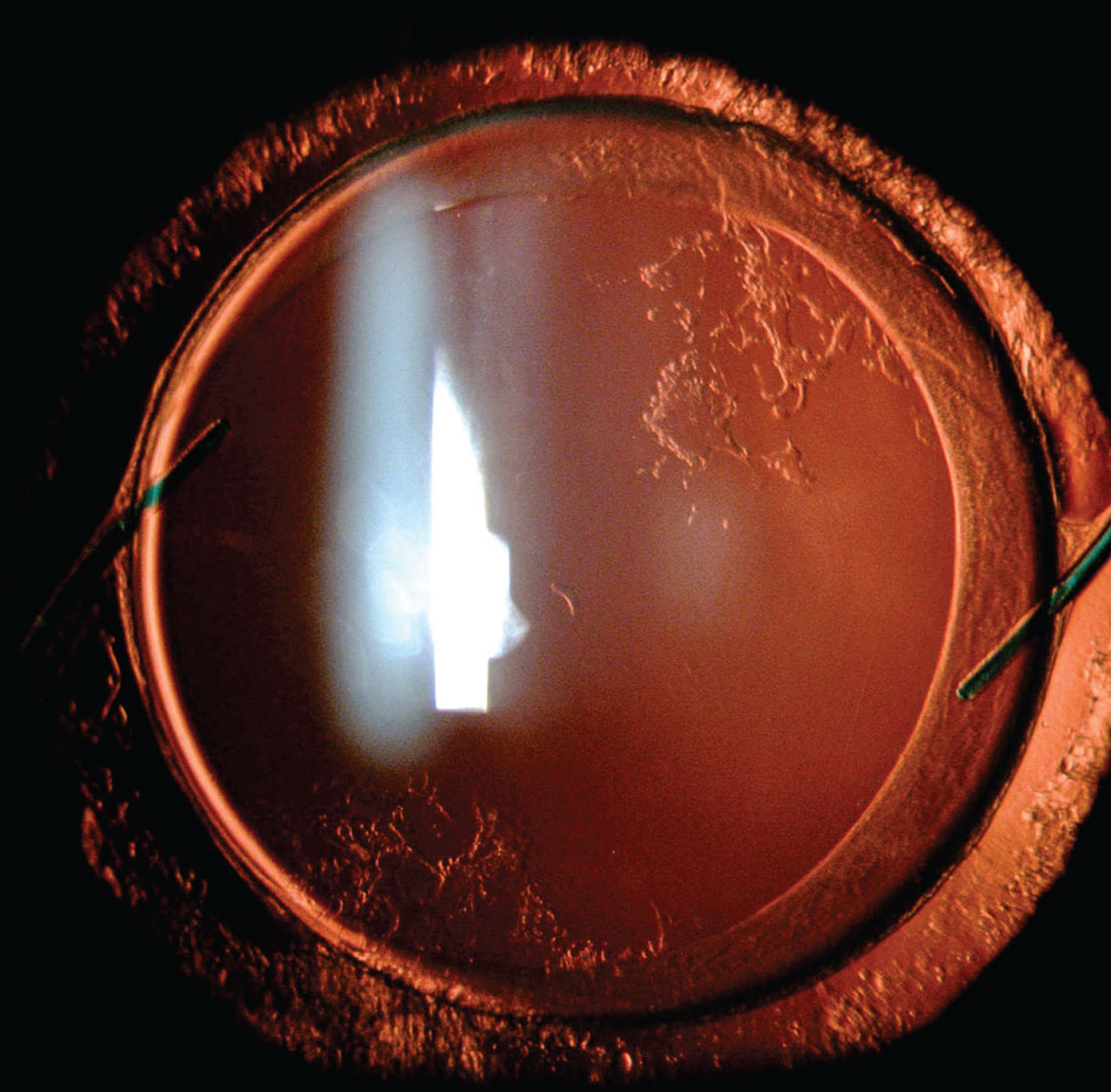 |
|
This study identified several risk factors for post-cataract PCO. Photo: Gleb Sukhovolskiy, OD. Click image to enlarge. |
Posterior capsular opacification (PCO)—the most common complication of the most common eye surgery—is certainly a familiar sight in optometry. Now, an analysis of a half-million surgeries reveals new insights on PCO’s most salient risk factors as well as incidence rates at various time points after the procedure. This UK-based study used data from the Royal College of Ophthalmologists’ National Ophthalmology Database.
The retrospective study included 500,872 cataract operations from 373,579 patients performed across 41 centers by 2,196 surgeons. To account for the disparate risk factors across such a diverse sample, the researchers used cluster analysis to account for the level of correlation across demographics.
Results included the specificity of first- and second-eye surgery’s sex and median age of operation. First-eye surgery—performed in 326,996 patients—was majority female at 57.8% of patients and median age at surgery was 76.4 years. Second-eye surgery—performed in 173,366 patients—was also majority female (59.0%) with median age of 77.4 years.
Intraocular lens (IOL) models used across the centers varied, with 4.9% only using just one, 9.8% using two options, 26.8% using three, 4.9% using four and 53.7% using five or more.
The rate of PCO was 12.3%. Follow up was conducted after surgery at periods of six months, one, three, five and nine years. Respectively, the PCO rates after these time periods were 2.3%, 4.4%, 19.7%, 34.0%, and 46.9%. Observed rates were found to be similar to those in other large studies.
In total, the study found six different correlated risk factors for development of PCO. These included axial length greater than 26mm, high myopia presence, implanted IOLs with lower powers, previous vitrectomy surgery, younger age and female sex.
Researchers note that hydrophilic IOL material has been proposed as a risk factor in developing PCO. Although one prior review did not find statistical significance between differing IOL optic materials, they did find that hydrogel or hydrophilic acrylic IOLs have higher PCO scores than other materials, while silicone IOLs demonstrated lower PCO scores across several studies. Other studies have also found higher PCO rates for hydrophilic IOLs. This study corroborates these previous conclusions, also illustrating a higher PCO rate amongst hydrophilic IOLs when compared to hydrophobic IOLs.
Older age at the time of surgery was associated with increasingly lower PCO rates, a fact reflected in previous studies as well. Although this is the case, the authors caution that PCO reduction by this variable is indicative at a population—not individual—level. Rather, they provide the explanation that reduced PCO rates may be a result of interventions delaying cataract onset, thus delaying a subsequent uptake of surgery.
While it is an advancement to know the potential risks factors associated with PCO development, many factors identified like female sex and myopia presence cannot be avoided. There is one factor that can be accounted for, though. Because this study found such varied rates in the number of IOL options used at different centers, the authors suggest that “centers should be strongly encouraged to undertake comparison of PCO rates for the different IOL they use, and opt for lenses that minimize the visual loss caused by PCO and the need for subsequent capsulotomy.”
Donachie PHJ, Barnes BL, Olaitan M, Sparrow JM, Buchan JC. The royal college of ophthalmologists’ national ophthalmology database study of cataract surgery: report 9, risk factors for posterior capsule opacification. Sp Nature. August 24, 2022. [Epub ahead of print]. |


